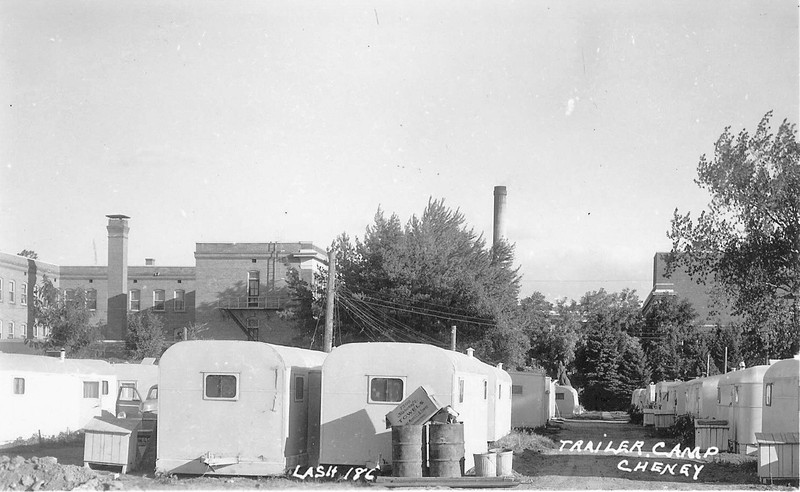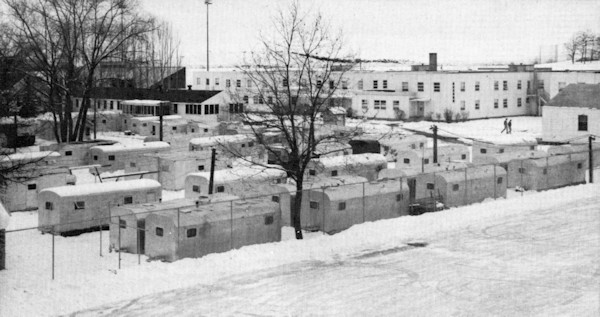1946 Trailerville
Introduction
Text-to-speech Audio
Images
1947 children's playground in Trailerville

1947 tiny kitchen

1947 Trailerville with the new Hudson Hall in the background

1947 the laundry building

Outside of the laundry building was an area for hanging clothes to dry.

1948 A father poses with his daughter in Trailerville

The trailers were tiny and cramped, but housing was in such short supply, that Trailerville was a welcome option. Students who lived there say they developed a real sense of community.

Trailerville community

Another view of Trailerville

Trailerville in winter 1955

Backstory and Context
Text-to-speech Audio
At the end of 1945,
the college received funding to acquire a number of war surplus small house
trailers to use as temporary housing. It opened July 1946, and became known as
"Trailerville."
The 8' x 35' tin and
plywood painted trailers served as married student housing for WWII veterans
and their families. Trailerville was located in an area behind Showalter Hall
and Monroe Hall. It had a capacity of 70 families. The small trailers rented
for $15 per month, with heat and lights supplied by the college. A small wood
military surplus building was used as a laundry and shower facility. Nearby
were outdoor clotheslines and a fenced playground for children.
The tiny
trailers were cold in winter and hot in summer, yet those who lived in them
remember them with a sort of fondness.
They were cramped and bare-boned, uncomfortable at times, a pain for doing laundry, and you had to time your shower. But we were a community, we looked after each other and each other's children. It was an experience I will always remember with fondness. -- Jean
The last of the college-owned trailers were removed from Trailerville by the summer of 1958, and much of the space once occupied by the village was turned over to parking.
Sources
Kinnikinick 1947, 1948, 1955
